Drought: When Water Is Scarce
During a drought, there is less rain and snow than usual over a long time. But drought isn’t caused by a certain amount of dry or hot weather; it depends on what’s typical for a location. Some locations are naturally drier than others, so the same lack of rain can lead to drought in one place but not in another. For example, the northeast U.S. or the Pacific Northwest, where rain is common, would experience drought if they had the same average rainfall as the Arizona desert, where rainfall amounts are typically smaller.
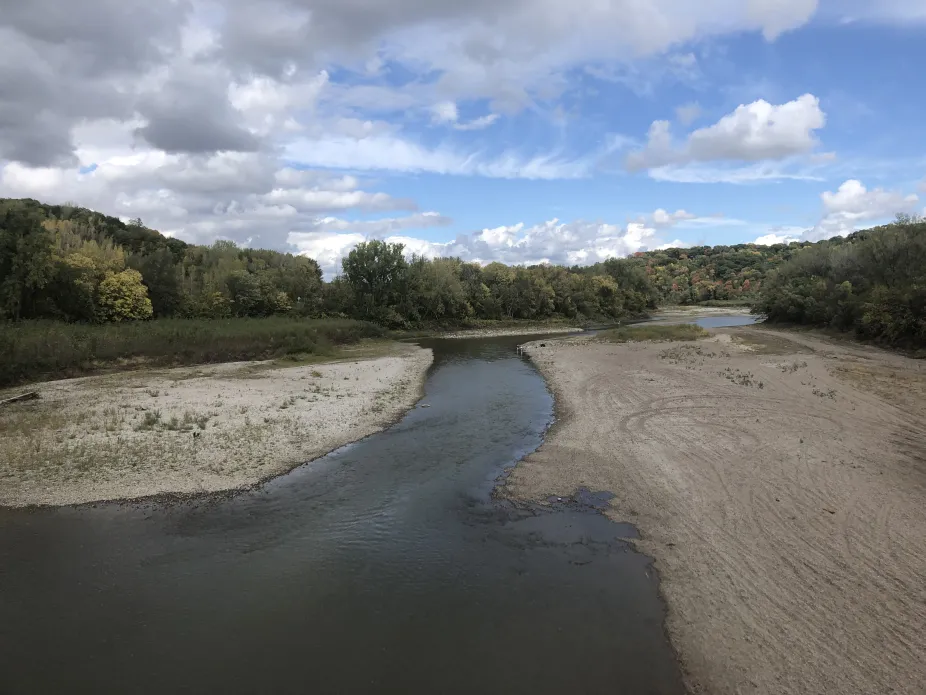
Even areas with wet climates can experience drought, dropping normally full rivers to very low levels, as occurred in the summer of 2023 during severe drought in the Upper Midwest.
A. Stevermer, UCAR
A drought is a period of unusually dry weather that lasts long enough to harm people, places, or ecosystems. Drought is sometimes called a “creeping disaster” because it develops and worsens over time. Some droughts occur after just a few weeks of dry weather, but in most cases, droughts last for months or even years. All droughts, even those that are less extreme, have harmful impacts.
While droughts are becoming more frequent and lasting longer as climate changes, drought is a natural phenomenon that can develop anywhere on the planet. Drought can come and go based on long-term changes in rainfall patterns in an area and can occur in any season. One drought event might end, but below-average rainfall over time can plunge a location back into drought. Historically, drought has affected about 20-30% of the U.S. at any one time, though the number of areas and specific locations experiencing drought can change over weeks and months. In fall 2022, for example, over 80% of the U.S. faced at least some degree of abnormally dry conditions, and 60% of the country was officially in drought. By May 2023, multiple months of wetter weather patterns in many areas had ended the drought, at least in the short term, in about half of the affected areas.
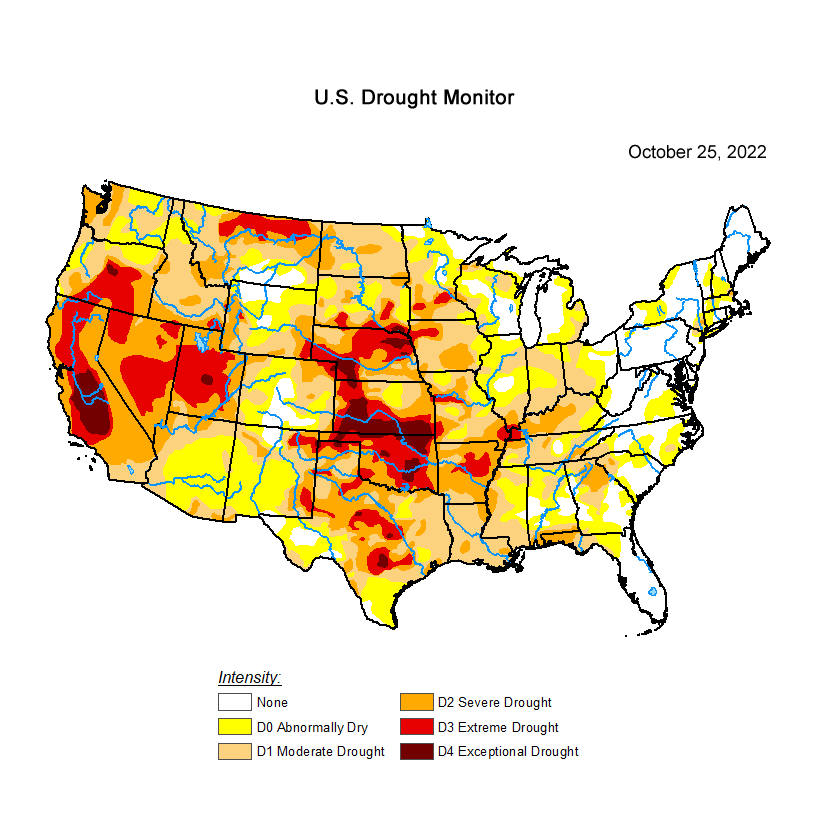
Drought can occur in any part of the country or the world and has different levels of severity at different times. The map’s dark orange and red colors show the worst drought areas and how the affected areas changed throughout the year.
U.S. Drought Monitor, https://droughtmonitor.unl.edu/
Drought affects agriculture.
Drought can dry up soil moisture and damage or even kill crops needed to feed both livestock and humans. Drought limits water supplies, making life difficult for livestock especially because the animals need more water when conditions are dry. A cow needs 14-18 gallons of water each day in hot weather. During severe droughts, farmers and ranchers may need to sell animals and reduce herd sizes to deal with the lack of water or grain available to feed them.
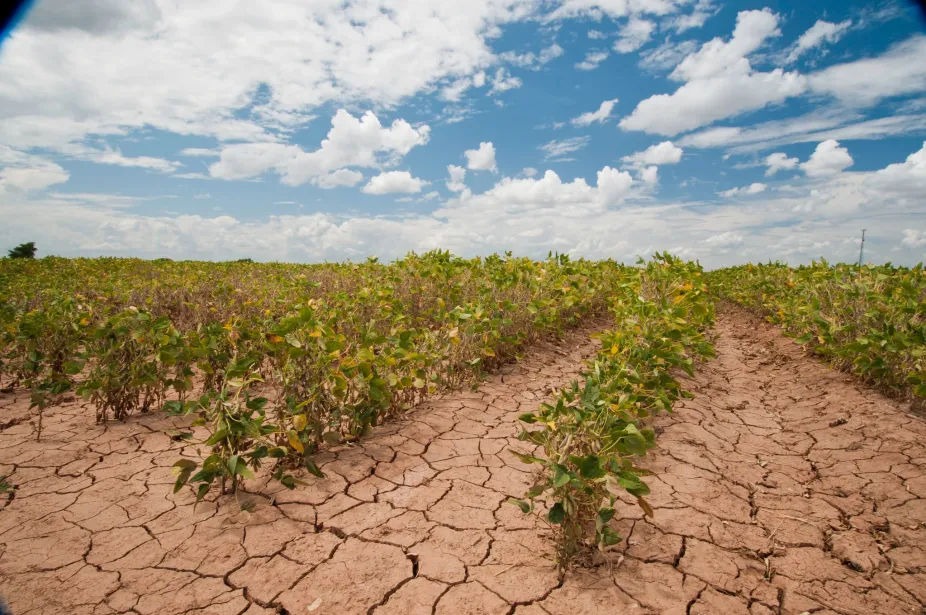
Crops like soybeans help feed chickens, turkeys, hogs, and cattle. Drought can damage these crops, reducing the amount of livestock feed available.
U.S. Department of Agriculture
Drought harms forests and increases wildfire risk.
Drought can lead to more or larger wildfires as forests and grasslands dry out. Ongoing drought can kill large areas of forest. In some cases, the trees don’t get enough moisture from the soil to survive. In other cases, the stress from drought makes the trees more likely to be harmed by disease or pests. The effects can be evident over large areas: drought-killed trees in Oregon covered an estimated 1.1 million acres (4450 square km) in 2022. Similar numbers of trees have been lost throughout the Western U.S. The dead trees provide fuel for fast-moving wildfires that are difficult to fight or contain.
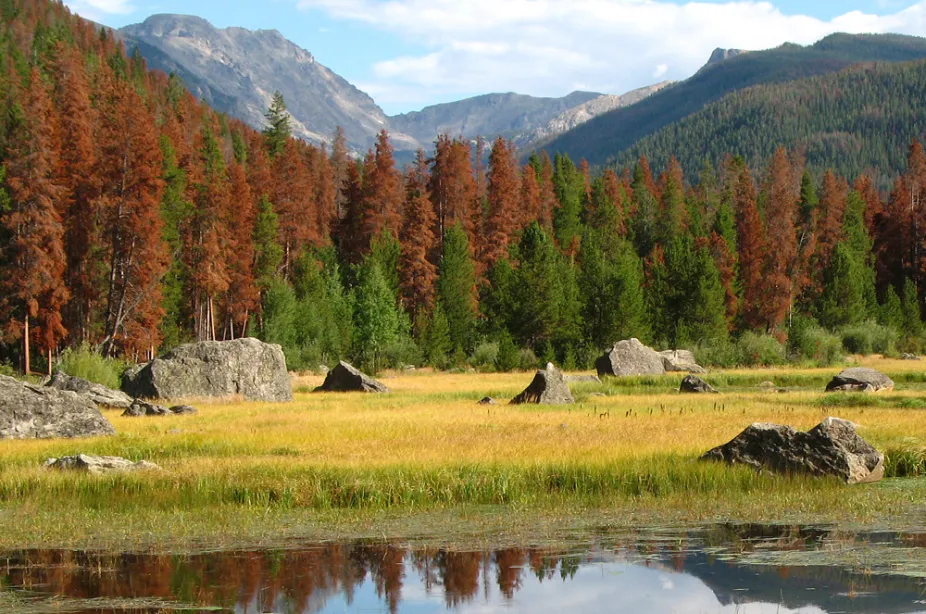
Dead trees can ignite quickly, fueling wildfires. Warmer winters and ongoing drought contributed to this tree loss in a Colorado forest.
Carlye Calvin, UCAR
Drought affects water levels and hydropower.
As drought becomes more extreme, rivers and streams carry less water, and water levels in reservoirs drop. This reduces our water supplies. Because water flows downhill, water supplies might be low even far away from the area experiencing drought. For example, in the Colorado River Basin, drought in upstream areas like Colorado and Utah leads to less water downstream for Arizona, Nevada, and California. Low water levels in reservoirs mean less water for communities who depend on it.
Low water levels also reduce the amount of electricity that can be made by hydropower, an important energy source for people throughout the West. Washington state, for example, gets over two-thirds of its energy from hydropower. As drought continues to impact the U.S. Southwest, there is worry that water levels on Lake Mead and Lake Powell, the two largest reservoirs on the Colorado River, could become too low to produce enough hydropower at the dams. If water levels drop too much, the dams wouldn’t be able to produce hydropower at all, which would mean a loss of 3300 megawatts of available electricity, the amount needed to power over three million homes.
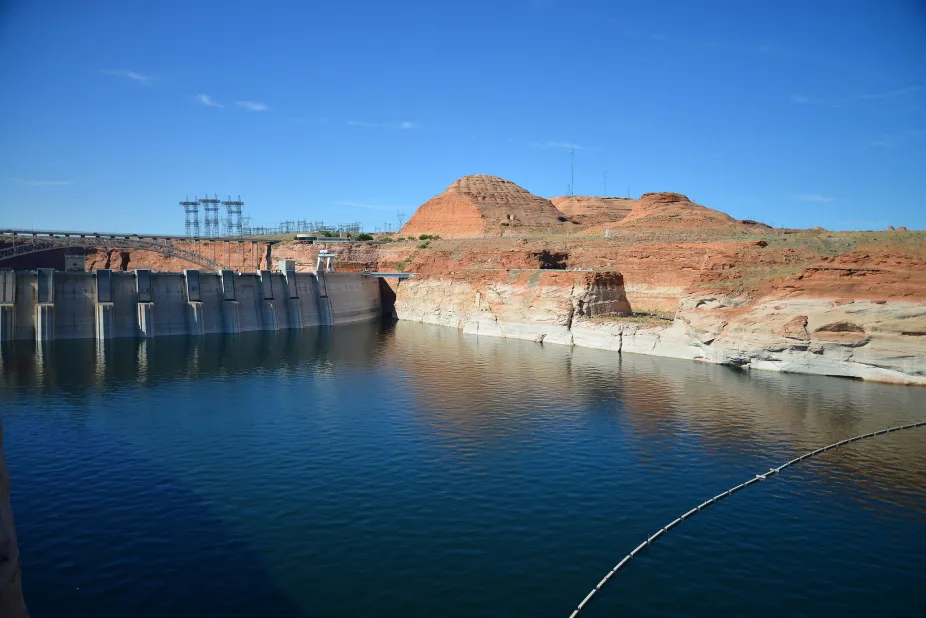
If water levels at Lake Powell drop too much, Glen Canyon Dam will no longer be able to produce hydroelectric power. Forty million people across the West rely on the Colorado River as a source of water and power.
U.S. Bureau of Reclamation
Drought affects people and the economy.
Because drought tends to happen over a long time, its impacts sometimes escape notice until they are too bad to ignore. Like other disasters, drought’s impacts can be most severe for populations who are already vulnerable based on limited access to adequate shelter and services, food, or other resources needed for daily life. Drought can affect people’s lives through a lack of access to fresh water. Long-term drought has forced communities to haul in water by truck, even in developed parts of the world such as California’s Central Valley and Cape Town, South Africa. People can’t survive without water, so when drought lasts for months or years, the effects on society are extreme. Currently, nearly 1.1 billion people worldwide lack access to water and 2.7 billion (or 3 in 10) people don’t have access to fresh water for at least 30 days every year.
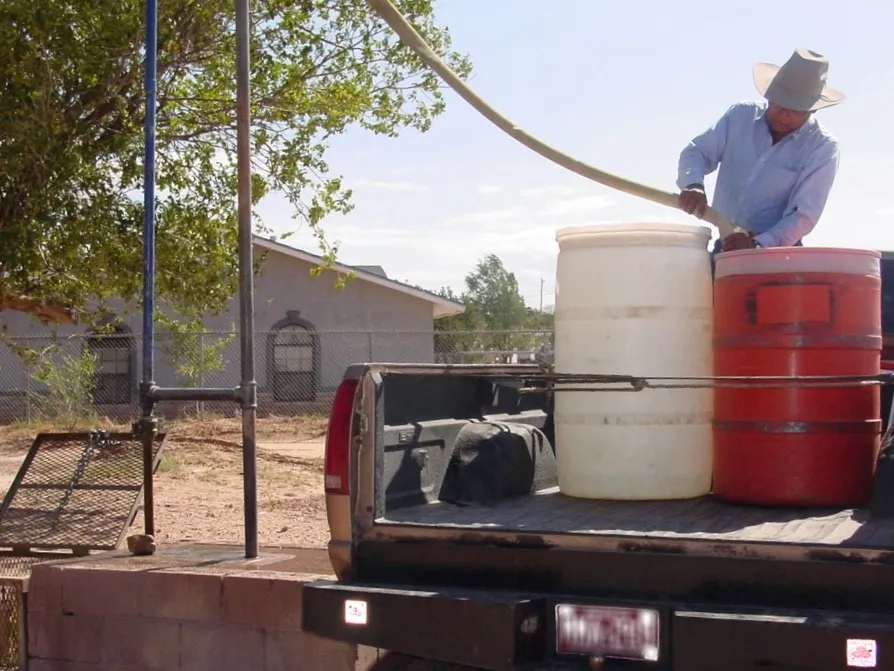
More than 40 percent of households living in the Navajo Nation in drought-affected Arizona and New Mexico rely on water hauling to meet daily needs.
U.S Environmental Protection Agency
Crop losses, livestock impacts, landscape and habitat changes, limited water, and other challenges caused by a single drought event can cost billions of dollars. Drought also impacts wildlife, ecosystems, recreation and tourism, and other aspects of our society, including waterway navigation and shipping.
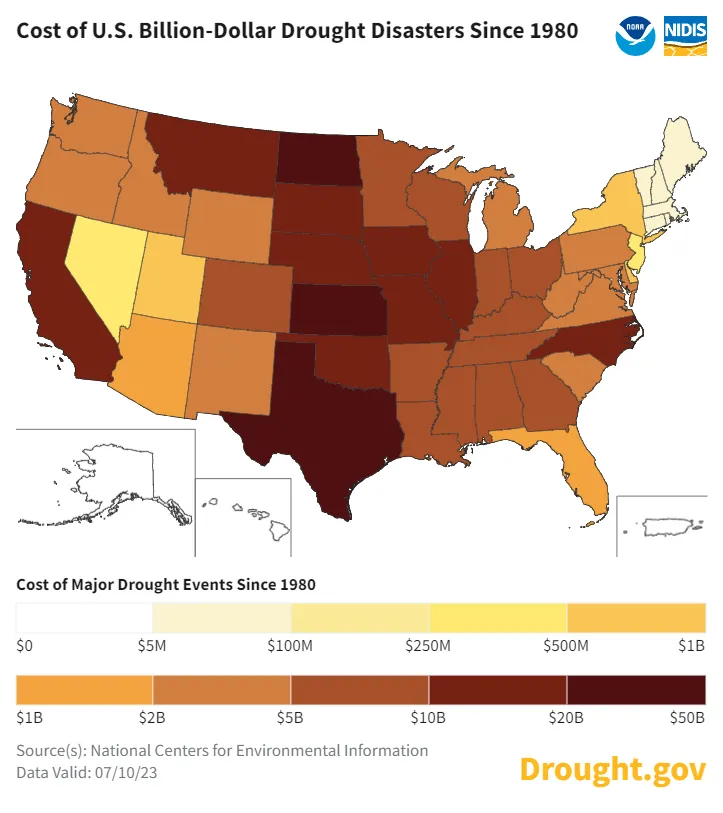
Drought is an expensive and consistently occurring weather disaster, costing billions of dollars each year. The darker colors on the map indicate areas where the most expensive drought damages have occurred.
NOAA/NCEI
Droughts are occurring more often and lasting longer.
Future droughts are expected to last longer, be more severe, and become more frequent as climate continues to change. Using models to project future drought, scientists have found an increased risk of severe drought around the world, including in the U.S. Midwest, South America’s Patagonia region, Mediterranean Europe, and northern Africa. Already, Uruguay, northern Argentina, and southern Brazil are battling their longest and largest drought in decades, with extremely harmful agriculture and economic impacts.
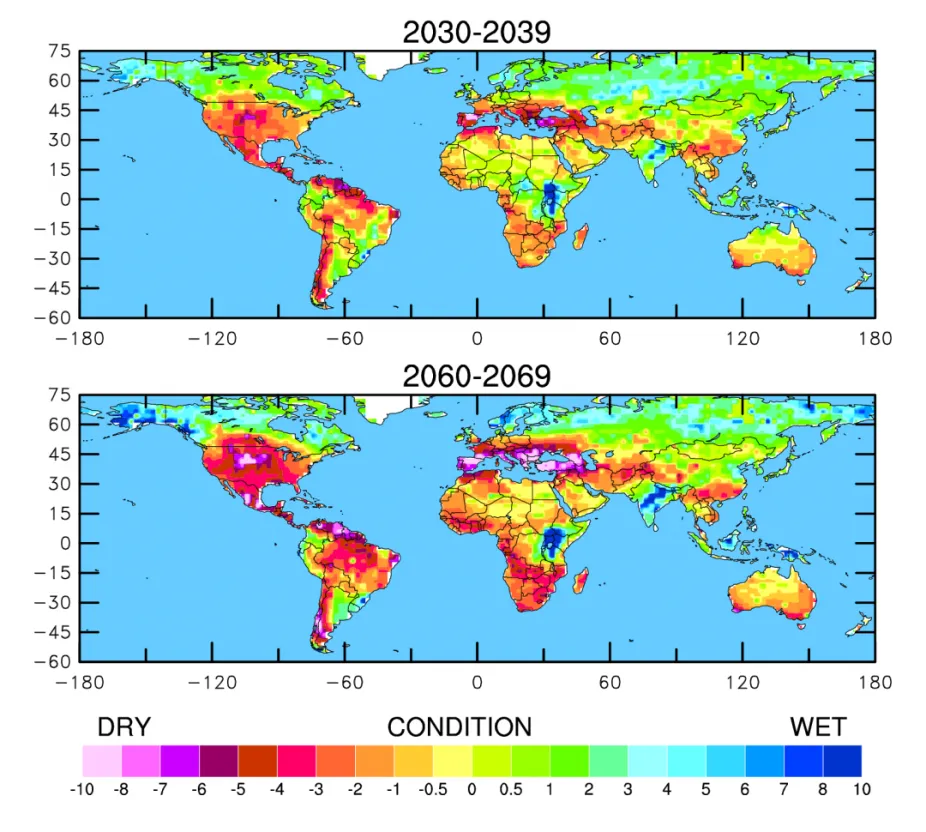
The yellow, red, and purple colors on the map indicate areas expected to be unusually dry during the decades from 2030-2039 and 2060-2069. Locations in the deepest reds and purples are most at risk for experiencing extreme drought.
Aigou Dai, NCAR
Water-wise actions can reduce drought impacts.
Many communities are taking steps to live with drought by using less water. Actions that help reduce water use include installing water-saving toilets, showers, and faucets and replacing leaky pipes and water mains. Lawns full of water-hungry grass can be replaced with drought-tolerant varieties such as fescue or clover or with native plants already adapted to drier climates.
Drought could force farms, orchards, and other types of agriculture in areas affected again and again to shift away from crops like rice, alfalfa, citrus, and almonds that require lots of water. Experiments switching to more drought-tolerant crops, including sorghum and sweet potato, are just beginning. In some drought-prone parts of the world, pearl millet, a drought-tolerant grain, is already replacing corn and wheat, which can be large parts of people’s diets. By working on water conservation and resiliency, regions, communities, and individuals can help reduce the severity of current and future drought impacts.